Not only is Virginia filled with historical sites, elegant mountain views, scenic beaches, and an array of art and culture locations, but Virginia’s National Parks, Monuments, Trails, and Battlefield make great stops on your Virginia trip itinerary.
The National Park Service manages about two dozen sites. The sites include the Shenandoah National Park, The Arlington House at the Arlington National Cemetery, Assateague Island, Wolf Trap National Park for the Performing Arts, and the 330-mile-long Overmountain Victory National Historic Trail.
Head to some of Virginia’s parks, enjoy both their natural beauty and unique landscapes, and explore some of the extensive histories that the National Park sites offer.
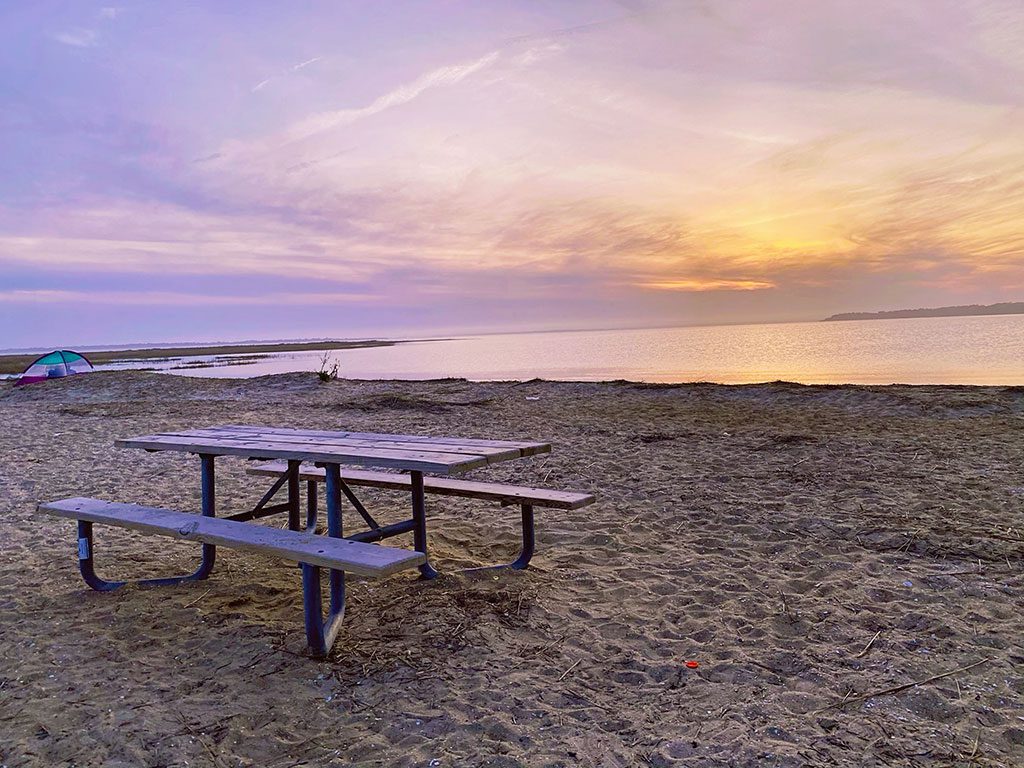
National Park Fee Free Days
Throughout the year, the National Park Service offers six free days where you can enter the park or memorial without paying the usual fee.
- Martin Luther King Jr. Day – Third Monday in January
- The First day of National Park Week –April
- In celebration of the Great American Outdoors Act – August (August 5, 2021)
- Birthday of the National Park Service – August (August 25, 2021)
- National Public Lands Day – September (September 26, 2021)
- Veterans’ Day – November 11
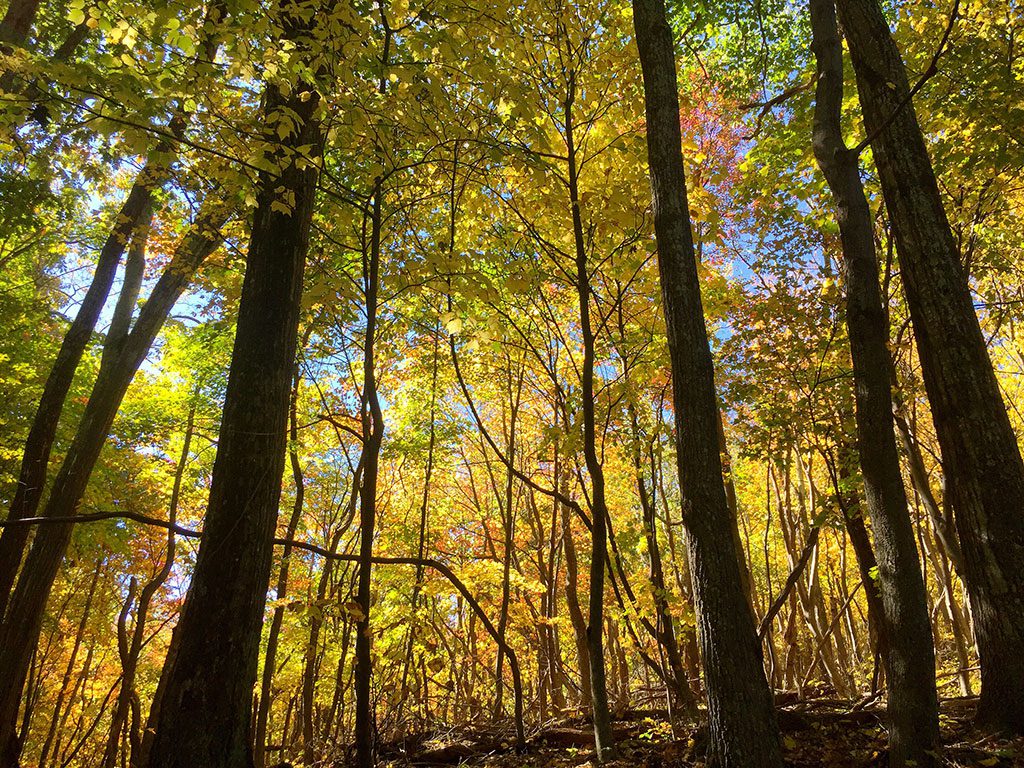
Every Virginia National Park
Get ready to put on your hiking boots, set out for a scenic drive, or explore a little history as you venture across Virginia, visiting the National Historic Landmarks, National Natural Landmarks, National Heritage Areas, and National Trails.

The Appalachian Trail
Those who don’t have six months to hike the entire 2,190 miles of the Appalachian Trail that stretches from Springer Mountain, Georgia, to Mount Katahdin, Maine, may want to try the Virginia section.
Virginia claims over 555 miles or almost ¼ of the A.T., and more than any other state.
Hiking the Virginia portion of the trail will take you through parts of Virginia’s acclaimed history, over the rolling Shenandoah National Park mountains and idyllic scenery of both farmlands and forests. The elevation fluctuates between 265 and 5,500 feet during this stretch as you hike between Harpers Ferry and the Tennessee/North Carolina line.
If you only want to hike a short piece of it, head to the Shenandoah National Park’s Skyline Drive, where it crosses the Appalachian Trail over 30 times in 100 miles.
Appomattox Court House and National Historical Park
At the Appomattox Court House in 1865, Robert E Lee surrendered, ending the nation’s Civil War. Today the reconstructed courthouse is open with exhibits and a 15-minute film. In addition, you can also visit the Visitor Center, the 1819 Clover Hill Tavern, and the home where Grant and Lee met. The National Park Service offers living history programs and guided walking tours throughout the summer.
While here, enjoy strolling along the History Trail. The trail is four miles long and passes locations connected with Lee’s surrender.
Arlington House, The Robert E. Lee Memorial
On the sacred grounds of the Arlington National Cemetery, you will find Martha Washington’s grandson George Washington Custis’s house, which later became the home of Confederate General Robert E. Lee before the Civil War.
The Arlington House is a memorial to Lee for his efforts in promoting peace following the Civil War.
The restored Greek Revival Mansion is open to visitors for tours. Inside, you can see Lee’s writing desk as well as original paintings and furnishings.

Assateague Island National Seashore
The 37-mile long barrier island is home to the famous Assateague ponies, white sandy beaches, maritime forests, and salt marshes.
Your exploration of the island will most likely either begin in Maryland at the Assateague State Park or in Chincoteague, where you will take the causeway to the beach that you might share with a horse or two.
The area is also a hotbed for migratory birds, including the piping plover.
Find more Things To Do In Chincoteague

Blue Ridge Parkway
For 469 miles, you can meander through the Appalachian Mountains from near Waynesboro, Virginia, south to the Great Smoky Mountain National Park in North Carolina. During your drive, you can take in the majestic views, stop and explore 360 miles of trails, fish, visit the exhibits, or spend the night.
The parkway is abundant with colors during the fall and offers terrific photo opts; however, it is its busiest time.
Booker T Washington Monument
On the Virginia Tobacco plantation grounds where Booker T. Washington was born in 1856, you can learn more about his life and legacy at the Visitor Center.
The site also offers a chance to stretch your legs along the ¼-mile Plantation Trail and the 1-mile Jack-O-Lantern Branch Heritage Trail that passes natural resources used at the plantation.
Captain John Smith Chesapeake National Historic Trail
From 1607 until 1609, Captain John Smith explored and documented nearly 3,000 miles of rivers, inlets, Indian communities, and coastline along the Chesapeake Bay.
In 2006, Smith’s documented journeys became the first national water trail in which you can follow along Captain Smith’s routes and learn more about the Chesapeake Bay and places he explored.
Overmountain Victory National Historic Trail
To explore the entire Overmountain Victory Trail, you will have to explore the patriot militia’s Virginia routes used in the 1780 campaign and then venture into Tennessee, North Carolina, and South Carolina to follow the Commemorative Motor Route and the rest of the 330 miles.
There are over 87 miles of pathways to explore as you retrace the Revolutionary War’s routes.
More historic trails
- Star-Spangled Banner National Historic Trail
- Washington-Rochambeau Revolutionary Route (National Historic Trail)
Cedar Creek & Belle Grove National Historical Park
On the Shenandoah Valley’s fertile land was the decisive Union victory at Cedar Creek. Today you can explore the area through either self-guided or ranger-led driving tours, visit the 8th Vermont Infantry monument, Belle Grove Plantation, or Hupp’s Hill Civil War Park.
The Middletown Visitor Contact Station has interpretive exhibits and information on how to explore the park best.
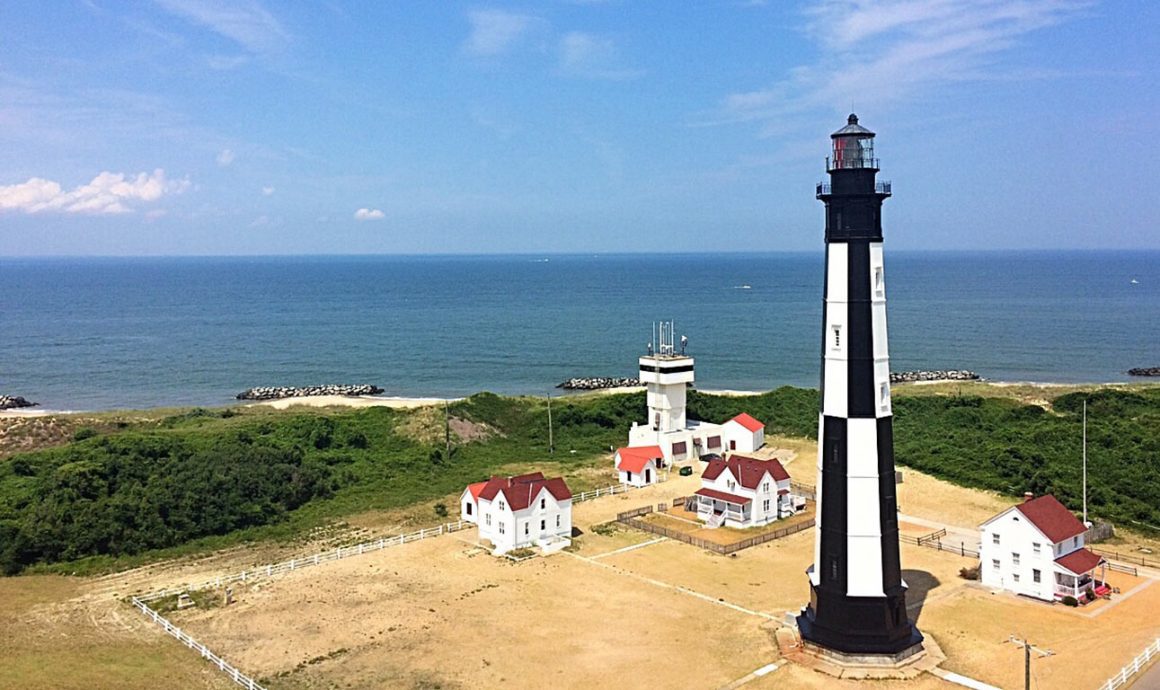
Colonial National Historical Park
The Colonial National Historical Park includes three locations that are very important in the United States’ history.
Cape Henry Memorial
Along the northern tip of Virginia Beach, where the Chesapeake Bay meets with the Atlantic Ocean, you will find a cross commemorating where the English settlers first set foot on land in 1607 that would later become the United States.
There is also a statue of the French commander, Admiral Comte deGrasse, who supported General George Washington and the two Cape Henry lighthouses.
To get to the memorial and lighthouses on the Fort Story Army Post, all adults will need to show ID (military, driver’s license, or passport) to enter the base gate.

Historic Jamestowne
In 1607 Jamestowne became the first permanently established North American English settlement. Spend some time in this restored historic area walking in Pocahontas and Captain John Smith’s footsteps. During ranger-led tours, you can stand where Pocahontas and Rolfe were married in 1614, watch artisans make traditional 17th-century glass, or talk with archaeologists who or excavating James Fort.
The family archaeologist will want to take the archaeology walking tour through New Towne, offered daily at 11:00 AM and 2:00 PM.
Enjoy lunch at the riverside café, where you can eat and watch the wildlife before exploring the area as you drive along the 5-mile Island Loop.
Read our Jamestown VA planning guide

Yorktown Battlefield
Explore the grounds of the Revolutionary War’s last major battle where British General Cornwallis surrendered to General Washington’s troops in 1781.
Along the driving tour, you will be able to see battlefields, the Victory and Alliance Monument, the Visitor Center, which has a variety of great exhibits, the “Siege at Yorktown” film, and costumed infantrymen who fire off the 18th-century cannons.
The 23-mile Colonial Parkway connects Historic Jamestowne and Yorktown Battlefield while passing nearby Colonial Williamsburg, completing the Historic Triangle area.
Read our Yorktown VA planning guide
Claude Moore Colonial Farm Historic Park
Experience what Colonial life was like on this historic farm in McLean. The farm offers a chance to explore what an 18th-century home would look like, a shop full of local summer produce and the tobacco fields.
During your visit, workers in their 18th-century costumes will help bring the place to life through stories.
Cumberland Gap
The Cumberland Gap was known as the east coast’s first gateway to the wild west. It lead folks, including Daniel Boone, through the mountain pass into the Kentucky wilderness.
Today the park encompasses more than 20,000 acres, 80 miles of trails, Visitor Centers, overlook drive, and ranger tours to Gap Cave and Hensley Settlement.
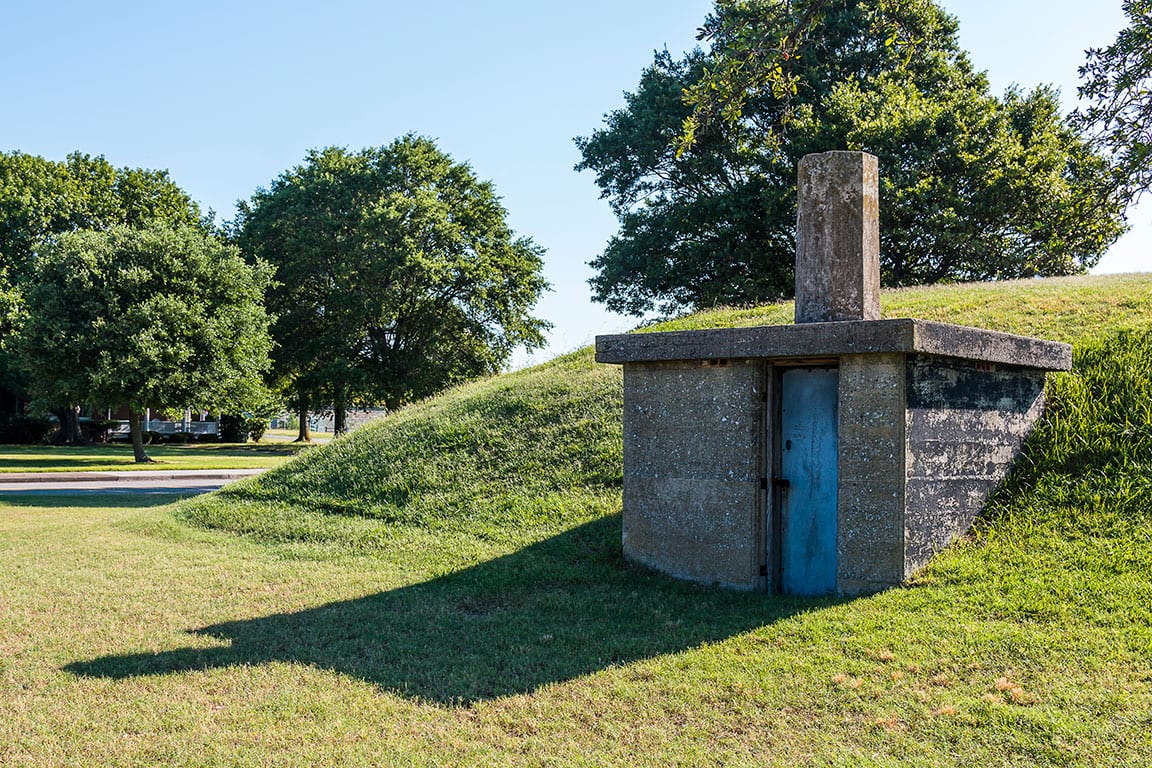
Fort Monroe
Along the Chesapeake Bay, Fort Monroe was constructed in 1834 to defend the coastline.
After being decommissioned in 2011, the United States’ largest stone fort now welcomes visitors to explore the fort.
Check out their website for hours throughout the year. On some weekends, they even have Civil War Encampments going on within the fort. When this happens, you can stop at the different campsites, listen to the soldiers’ stories, see their equipment, and ask questions. They are very informative, and they make history come alive for both children and adults.
This National Monument is free to visit.
Casemate Museum
Have you ever been inside a fort? Check out the Casemate Museum, housed in the United State’s largest fort, and learn about its role during the Civil War.
The museum is a perfect place to venture on a hot summer day since it is nice and cool inside the fort’s thick walls.
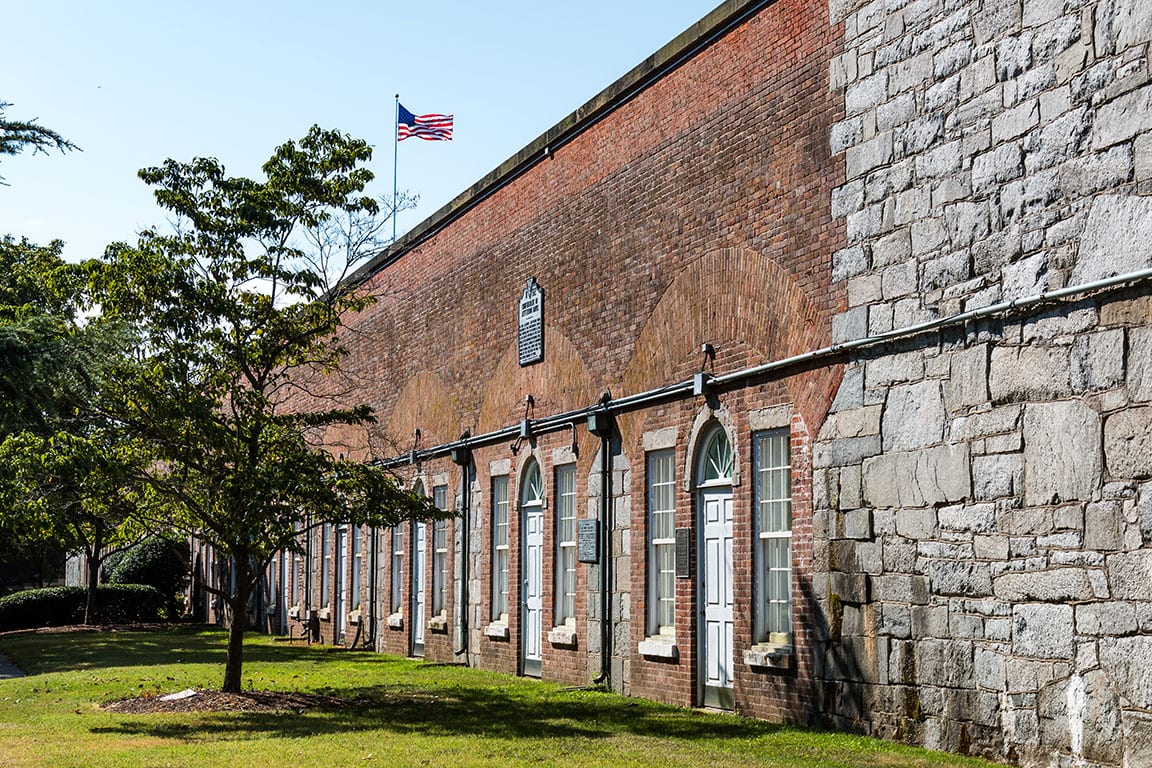
Fort Monroe Walking Tour
The Fort Monroe Walking Tour leads you to several locations inside and outside Fort Monroe National Monument’s walls. You can see the buildings where Robert E. Lee lived and where Jefferson Davis was held, along with the Old Point Lighthouse.
Stand along the fort’s walls and look down into the moat and across the Chesapeake Bay and deep-water Hampton Roads Harbor. Discover why they built the fort in 1834 and what it was protecting.
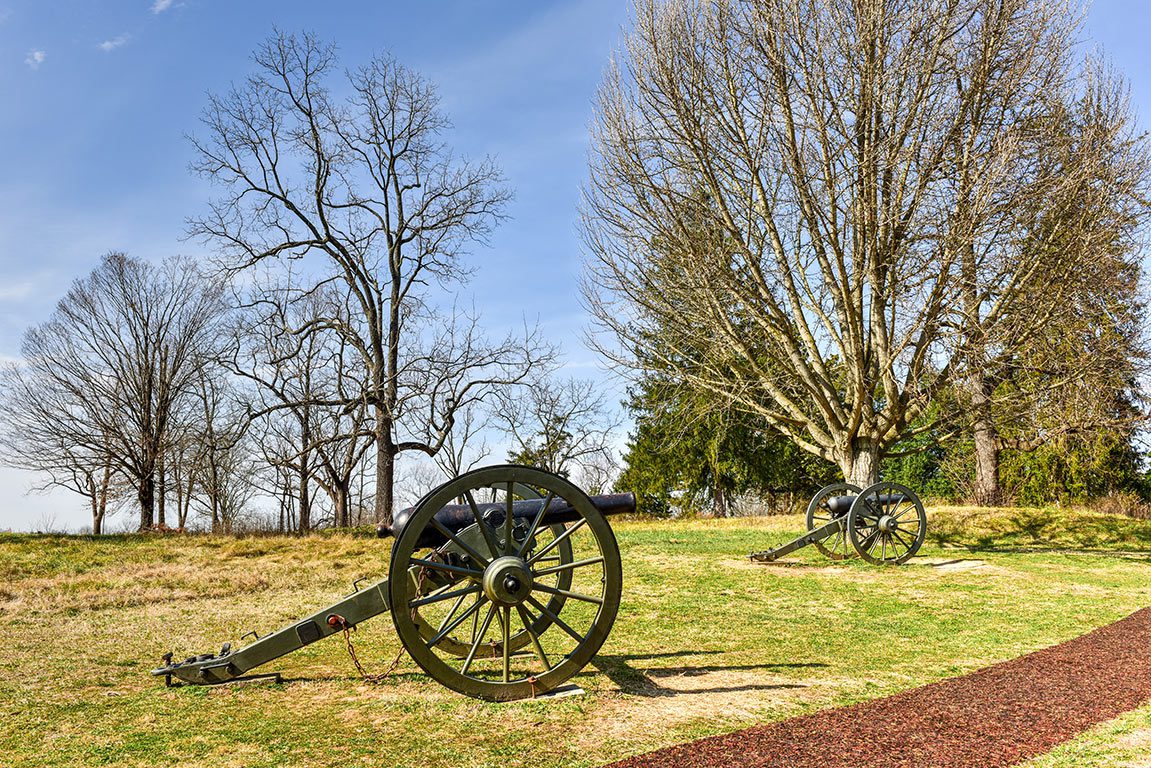
Fredericksburg & Spotsylvania Battlefields and National Military Park
Across the Chancellorsville, Fredericksburg, Spotsylvania, and Wilderness areas, the Civil War climaxed with towns ruined, refugees fleeing to the countryside, along with more than 15,000 soldiers killed and 85,000 wounded.
To get a complete understanding of the importance of the Fredericksburg Battlefield during the Civil War, head to the National Park Service Visitor Center and watch the 22-minute orientation film. At the Visitor’s Center, you can also check to see what programs the park rangers have scheduled during your visit and pick up a copy of the NPS Auto Touring CD or use the Fredericksburg Battle App on your phone.
Visit the Sunken Road and explore the exhibits and walk along this historic road that was the focal point of multiple assaults and 10,000 soldiers became casualties. For a nice walk, take the Sunken Road/National Cemetery Loop Trail. It is 8/10-mile and goes from the historic Sunken Road to Marye’s Heights.
Then head to Chatham, the Georgian-style plantation that served as a hospital and welcomed famous Americans like George Washington and Abraham Lincoln. Continue to the Slaughter Pen Farm, Prospect Hill, and the Fredericksburg National Cemetery, the burial grounds of over 15,000 Union soldiers.
At Lee Hill, there is a ¼-mile trail that climbs to the peak of Lee’s Hill, where Robert E Lee set up his command post. There is an exhibit shelter will information at the site. Along Lee Drive, there are two trails. The North Lee Drive Trail is 2.8 miles, and the South Lee Drive Trail is 2.4 miles.
The Chancellorsville Battlefield Visitor’s Center’s film portrays the vital history of this site along with guided weekend tours. You will learn about Stonewall Jackson’s injuries and how this battlefield acquired the most casualties of any Virginia battle.
George Washington Memorial Parkway
Designed to leisurely drive, the 25-mile George Washington Memorial Parkway along the Potomac River connects 20 historic sites in America’s history. Begin at Mount Vernon and stop and visit the Lyndon B. Johnson Memorial, Theodore Roosevelt Island, Clara Barton National Historic Site, and the Arlington House.
The Parkway’s trails, including the 18-mile Mount Vernon Trail and the trails through Great Falls National Park, provide a scenic environment just a short way from the hectic Washington, D.C. area.
George Washington Birthplace
The reconstructed house on the Popes Creek Plantation offers an inside look of the Washington home. Also on the 550-acre site is the Colonial Revival farm, where costumed interpreters will make it feel like the 18th-century, historic structures, and a visitors center.
After visiting the historic areas, enjoy a picnic on the grounds and splash in the water at the public beach.
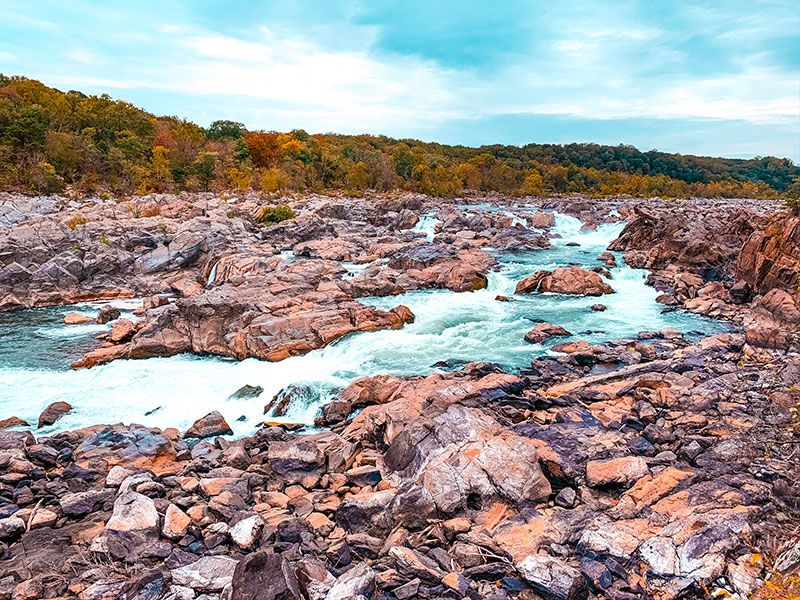
Great Falls National Park
Along the Great Falls National Park’s Potomac River, you will find the beautiful Great Falls.
Spend time wandering the trails through the park. From the overlooks, enjoy viewing the multiple cascades that tumble over the rocks as the Potomac River drops swiftly in elevation.
From the Virginia side, explore the falls and Mather Gorge by hiking along the 1½ mile River Trail.
From the Maryland side, take the Billy Goat Trail. It offers several access points to view the stunning falls. While on the Maryland side, take a trip back in history as you walk beside the Patowmack Canal.
Before visiting the park, check the National Park website for flood advisories. While there, observe the flood signpost to see the record-high floodwater lines.
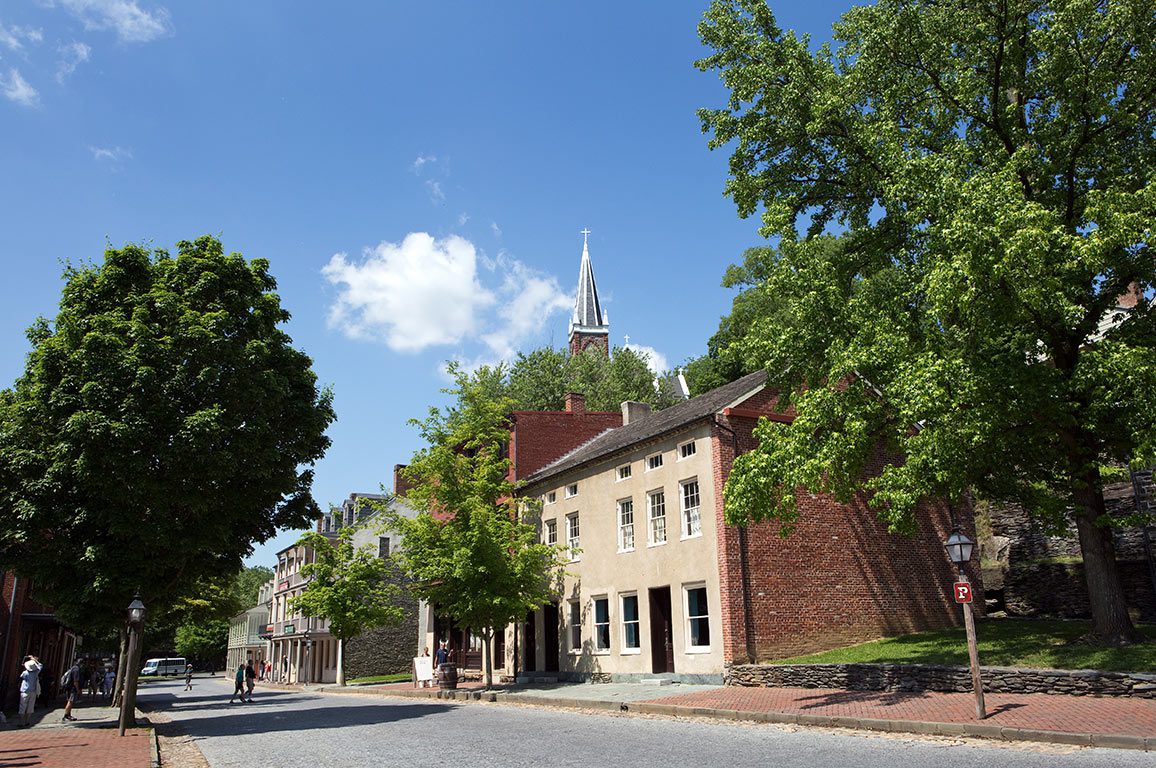
Harpers Ferry National Historical Park
At the Potomac and Shenandoah Rivers’ confluence, history buffs will want to take a guided tour of the Battle of Bolivar Heights site and explore museums to learn more about John Brown’s 1859 arsenal raid.
Nature lovers will want to spend time hiking the 22 miles of hiking trails, fish, or do a little whitewater rafting.
The National Park offers living history workshops and guided ranger tours of the historical grounds, Civil War skirmish lines, and overlooks throughout the year.
While in town, visit the tiny Civil War Living History Museum with a wealth of photos and artifacts to provide a clear Civil War timeline.
The John Brown Fort and Wax Museum should also be on your list. The museum details John Brown’s life and the raid on Harpers Ferry. The seize of the arsenal took place at the fort.
O’ Be JoyFull offers an excellent walking tour through the town where you learn about the first settlement and building the world’s first successful steamboat.
Maggie L Walker National Historic Site
This historic site, which she lived at until passing away in 1934, commemorates Maggie Walker’s life as a talented and progressive African American woman in the late 1800s to early 1900s.
She was active in civil rights advancements, education for women and African Americans, and economic empowerment during her life. She was a bank president, fraternal leader, newspaper editor, head of the Order of St. Luke, and on the NAACP board of directors.
When visiting the restored home at the corner of West Broad and Adams, in which she lived for over 30 years, you can view a film about her life, take a guided tour of the 28-room home, and learn more about Maggie’s vision and determination.
Manassas Battlefield
On the grounds of the infamous Battle of Bull Run, where the Confederate and Union armies converged in July of 1861, you can now get a comprehensive look at the equipment and timeline through electronic battle maps within the Manassas Battlefield Park.
When visiting the park, take part in interpretive Park Ranger presentations, walk along the 1-mile self-guided trail through the battlegrounds, explore the Visitor’s Center, or visit the historic sites on the driving tour.
Petersburg National Battlefield Park
The Petersburg Battlefield was the site of a 9 ½ month battle between the troops of Generals Grant and Lee, where 70,000 casualties occurred before Lee’s army would retreat to Appomattox and surrender.
The Battlefield Park offers visitors a great Visitor’s Center, key battlefield sites, guided tours, interpretive programs, and 33-mile audio driving tours to over 12 battlefield and siege sites.

Potomac Heritage Trail
The Potomac Heritage Trail is a conglomeration of trails that run along the Potomac River through Pennsylvania, Maryland, Virginia, and Washington, D.C.
The trails provide opportunities to hike, bike, boat, and camp along more than 800 miles of trails.
The network of trails includes:
- The 70-mile Laurel Highlands Hiking Trail in PA
- The 73-mile Great Allegheny Passage that runs from Ohiopyle, PA to Cumberland, MD
- The 185-mile Chesapeake and Ohio Canal Towpath from Georgetown, D.C. to Cumberland MD
- Civil War Defenses of Washington Trail
- 18-mile Mount Vernon Trail
Prince William Forest
A trip to Prince Williams Forest may be the perfect getaway for those looking for scenic trails, quiet woodlands, and scenic streams.
This 15,000-acre Northern Virginia oasis offers an RV park, cabins, an abandoned mine, historic sites, 37-miles of scenic hiking trails, and 21-miles of bike routes.
The park also has the most Civilian Conservation Corps (CCC) buildings of all the National Parks.
Richmond National Battlefield Park
At the Richmond National Battlefield Park, you can learn more about the 13 units across an 80-mile driving tour that includes the Seven Days Battle, Gaines’ Mill, and Cold Harbor,
Visit one or more of these historic sites and take part in ranger-led programs to better envision the many battles that took place here trying to protect Richmond,
The Confederate Capital. The park is open year-round.
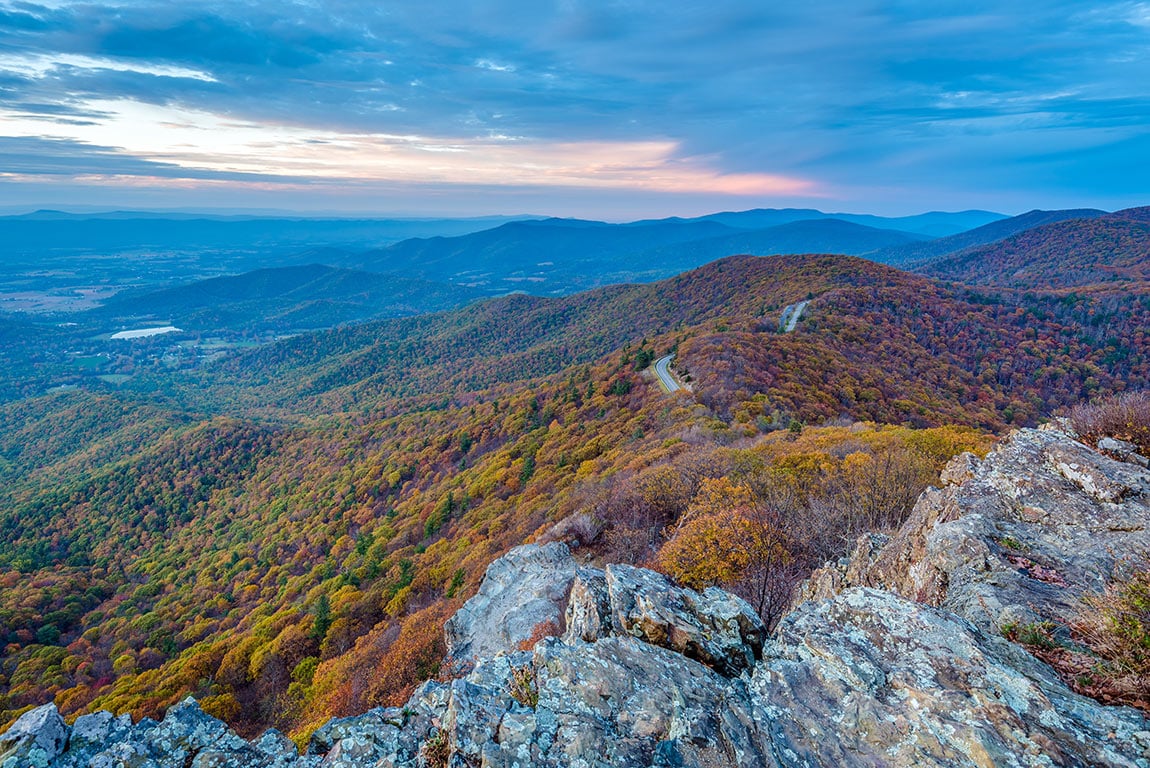
Shenandoah National Park
If you love the outdoors, a few days along the 110-mile Skyline Drive will be a match made in heaven for you. With over 70 overlooks with panoramic views, 513 miles of hiking trails, including 101 miles of the Appalachian Trail, and gushing waterfalls, the sightseeing never ends.
Choose to stay overnight within the Shenandoah National Park boundaries at the various campgrounds, cabins, or lodges.
The Shenandoah National Park offers visitors so many options of what to do while exploring the park.
There are nine main waterfalls within the park, including the Dark Hallow and Lewis Falls.
A spring hike is a prime time to visit the waterfalls since some falls tend to dry up to a trickle by late summer. However, a journey to the falls after a rain during the fall foliage peek is also breathtaking.
July in the park means ripe, juicy blackberries and the Blackberry Delight Festival. Visit the Skyland area for live music, dancing, crafts, activities, and all things blackberry.
One of the most popular times in the park is during the fall foliage, where you can enjoy hiking through the colorful forests or take in the beauty from the overlooks.
The Skyline Drive is closed to traffic during most of the winter.
Shenandoah National Park became the first National Park in Virginia in 1936 and continues to be one of the East Coast’s most visited parks. When the park’s Skyline Drive ends in Waynesboro, the Blue Ridge Parkway continues down through the remainder of Virginia into North Carolina.

Wolf Trap National Park for the Performing Arts
As the National Park system’s only performing arts park, you can come to Wolf Trap during almost any day from May through September and enjoy a musical, jazz concert, dance recital, an opera, or one of the country’s famous music stars or groups.
Wolf Trap has both indoor and outdoor facilities for its events. The two 18th-century barns, called The Barns at Wolf Trap with 352 seats, house the Wolf Trap Opera along with winter concerts, while the outdoor Theatre-in-the-Woods is where you will find children’s theater events like storytelling, puppetry, and a wide range of music.
The Filene Center averages nearly 90 concerts at the amphitheater that seats 7,000.
A national park wouldn’t be without beautiful hikes, and Wolf Trap has two great trails for bird watching. The 1½ mile Wolf Trap TRACK Trail takes you through the woods and across Wolf Trap Run. The Wolf Trap Trail is 2½ miles, meanders around the park perimeter through woodlands and wetlands. On the first Sunday of the month, join trail volunteers for a hike and other free educational events.

Chesapeake Bay
As the nation’s largest estuary, the Chesapeake Bay offers up loads of outdoor adventures both on and off the water. From fishing to sailing, kayaking, paddleboarding and soaking up the sun on the shores, you will never bee bored.
Best of all, you can access many spots in the Chesapeake Bay for free!
Green Springs National Historic Landmark District
Green Springs National Historic Landmark District is a national historic district that sits. on14,000 acres of rich farmland and 250 manor houses, barns and out buildings from the 18th and 19th centuries. What started as a Quaker settlement in the 1720s, soon grew as more families settled in the area.
Today, visitors can take a guided tour of this farm land that has been continuously tended for more than 200 years.


Pingback: 5 Easy Activities Bring History to Life in Jamestown Virginia